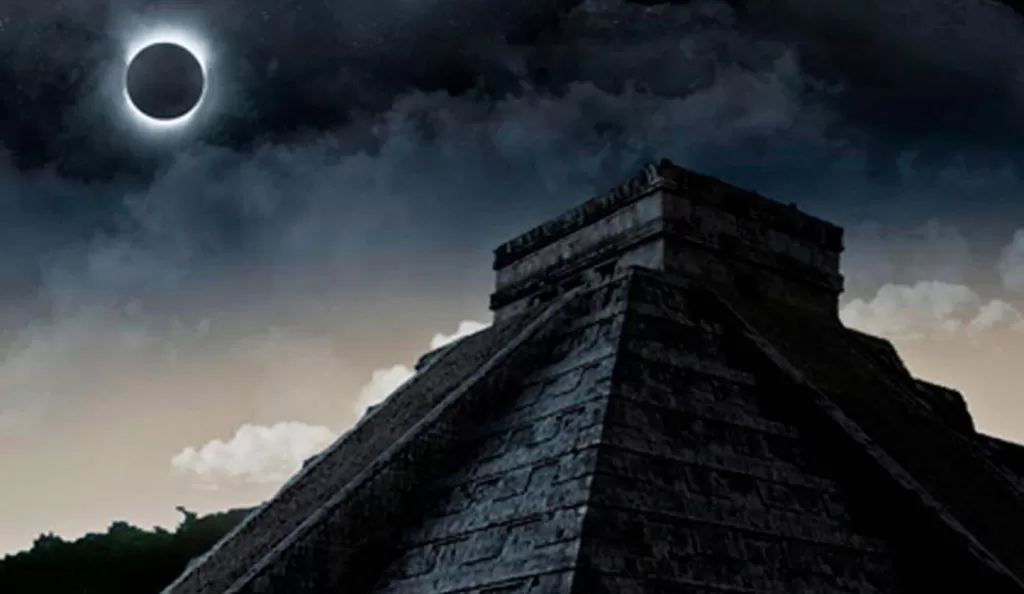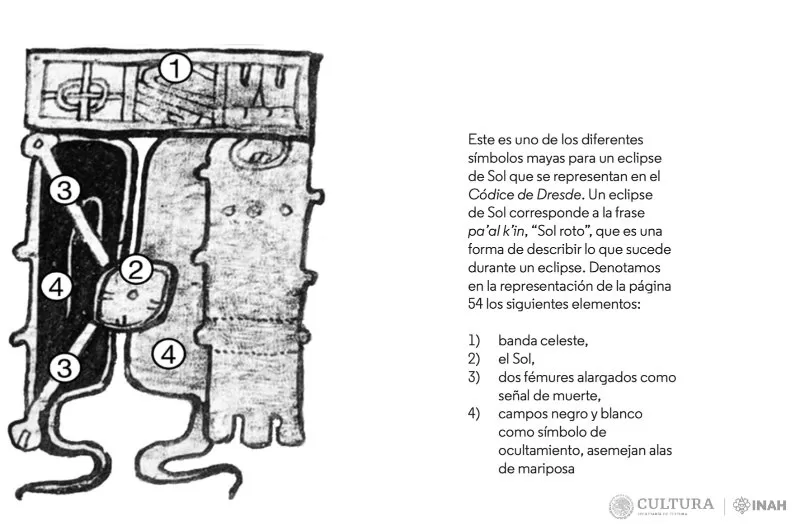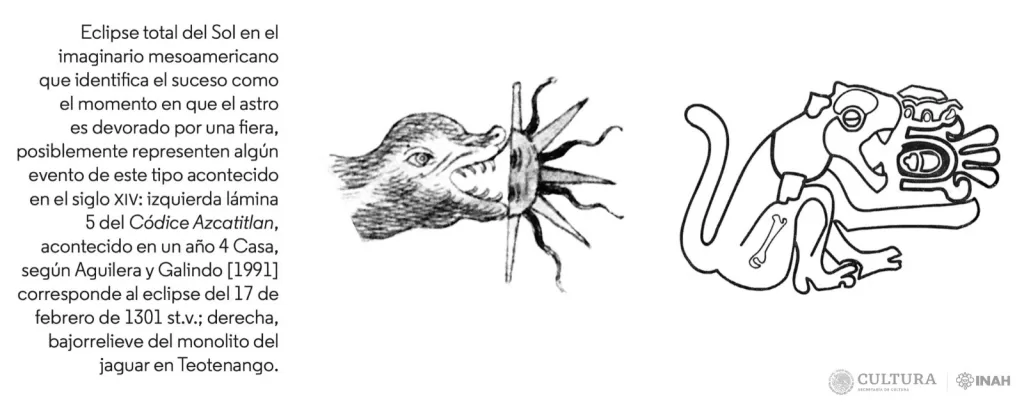
Devoured Sun
What did pre-Hispanic communities think about eclipses and other uncommon astronomical phenomena? And why they called it Devoured Sun?
On October 14, 2023, the Sun, the Moon, and the Earth will align to create an annular solar eclipse, visible throughout Mexico but most prominently in the Yucatán Peninsula and highly appreciated at archaeological sites like Jaina and Becán in Campeche. This astronomical event allows us to delve into the beliefs of antiquity.

We know that the Maya civilization delved deeply into astronomy; they could predict up to 55% of many phenomena, and when it comes to eclipses, there’s no doubt they were the best in past times. In fact, they had various poetic names for eclipses: “bite of the sun,” “bite of the moon,” “Fire” or “dead candle” for the total solar eclipse, and “extinguishing” or “erasing” for lunar eclipses.
It is said that during eclipses, the Maya made noise to assist the celestial bodies in their transition; they would make dogs howl or create all sorts of noise with objects. Eclipses were taken as omens of bad things by some Maya communities, and it was also believed that the mythical ants known as Xibal attacked the sun to devour it.
The Tzotzil Maya considered eclipses as illnesses of the celestial bodies and used two terms: “cha’k’ak’al” for the sun and “cham’u” for the moon, where “cham” refers to being sick, ailing, or dying. On the other hand, the Quiché Maya would lock themselves in their homes and forbid devoured sun viewing because they believed it paralyzed the eyes and caused blindness. Looking at the moon was also thought to bring about illnesses.

That’s why various amulets are used during eclipses to protect the body or energy. Some pregnant women tie a red scarf around their waist, as the color red counteracts the eclipse’s cold. They use metal crosses on their stomachs, which could be nails, keys, or even hooks, all with the purpose of safeguarding themselves from harmful forces.
If a pregnant woman scratched herself during the eclipse, the baby would be born with a birthmark or skin discolorations. In the case of a lunar eclipse, it was called “chi’ibal uj” (bite of the moon), and for a solar eclipse, it was known as “chi’ibal k’in” (bite of the sun). The mark would appear where the mother scratched herself and could be red or black. Across the Mayab, there were mystical beliefs regarding eclipses, shedding light on the rich worldview of our culture.
Devoured Sun: eclipses according to the Nahuas
The Nahuas described it as “Tonatiuh qualo,” which means “the Sun is eaten.” Beyond the fear that an eclipse could evoke among the pre-Hispanic population, many communities used systems to count lunar months associated with dates in the so-called “long count.” In combination with glyphs, they made astronomical calculations.

How and why could pre-Hispanic communities predict eclipses? It is said that, in practical terms, a solar eclipse can only occur during a new moon, and a lunar eclipse can only occur during a full moon. With this foundation, a certain degree of prediction could be made, considering adjustments as demonstrated in the Dresden Codex.
While this is much more complex, special symbols were used to describe eclipses, consisting of a celestial band, the Sun, two femurs as a death symbol, and black and white fields resembling butterfly wings in reference to the concealing.
If you’re interested in this and other topics related to archaeoastronomy, we recommend the book “La astronomía en Mesoamérica” by Arturo Montero García.
